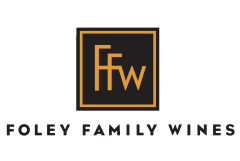Organizing Information is Key
Bill Foley didn’t build his empire by standing still. He did it by growing, and that’s what he aims to continue doing with Foley Family Wines, Inc.
The 72-year-old founder of the Santa Rosa, CA-based wine company grew it from a single Santa Barbara vineyard in 1996 to nearly 4,000 acres worldwide and the 18th largest wine company in the U.S. At its current pace, Foley will close 2017 with 1.6 million cases.
As competition in the wine industry intensifies, the 200-member-strong Foley team is pushing for 2 million cases a year — and counting on the TARGIT's business analytics for wineries to help make it possible. Like many wine companies, Foley’s accelerated growth has meant outgrowing the spreadsheets they once used to manage data — and all the painstaking hours that go with them. Since TARGIT came on board in 2016, every department is reaping the benefits. Five key players tell us how.
How the “Doer of Things” Gets Things Done
Foley’s former Manager of Business Processes, Kristina Gerren, was known around the winery as the Doer of Things. Gerren did many things during her six-year tenure at Foley Family Wines, including becoming the de facto systems and data expert for the DTC side of the business. She was a critical player in helping the company streamline its data collection and reporting efforts, an endeavor that was powered primarily by TARGIT.
“Prior to us having TARGIT, we were pulling data out of a lot of different source systems,” says Gerren. “The majority of the work was manually done in Excel, which takes a lot of time. And, of course, it’s out of date as soon as you update it.”
The majority of Gerren’s days were once occupied with regular reporting that had to be done weekly and monthly, along with the occasional ad hoc reports. “Anything that was truly ad hoc was a big undertaking,” she says, “because we were pulling data out of so many systems and putting it all into Excel and then manipulating it from there.”
By contrast, Gerren “loves using TARGIT.” She often used dashboards to generate the regular reports she provided to various internal stakeholders. For ad hoc reporting, she turned to TARGIT’s development module, which lets users tailor reports to the audience — data-heavy for the numbers-oriented finance team, and more visual for C-level executives and the DTC team.
“It's been a game changer for me in my position, but I think the thing I appreciate most about TARGIT is the flexibility and the customization,” says Gerren.
Gerren was also responsible for training nearly every department on how to use their new BI solution. She credits the success of these trainings to TARGIT’s user-friendliness and the way it let her tailor her training to the user.
Gerren has trained the DTC team in the tasting room, which uses TARGIT several times a day to track sales (and which represents 25 percent of Foley’s revenue). She’s also trained the sales admin team, which uses TARGIT on a daily basis to manage inventory levels. “Having access to TARGIT with up-to-date inventory information is crucial for them,” Gerren says.
Another team that finds TARGIT indispensable is the finance department, which uses it for monthly reporting, according to Gerren. She can empathize, since reporting is where she’s felt the biggest difference. “I was spending a full Monday every week manually putting together our standard weekly reporting,” she says. “Now that report is pre-built in TARGIT and updates on a daily basis, and I can email it out in a PDF. It takes me maybe five minutes.”
How the Senior Hospitality Manager Got His Life Back
Kenny Koda, Former Senior Hospitality Manager for Foley Family Wines’ Napa Valley properties, also a dramatic difference in his workday after TARGIT came on the scene. “Having TARGIT to organize information for me is a lifesaver,” he says. “It lets me spend more time training my employees on points of hospitality and not behind a computer looking at spreadsheets.”
Koda has managed three hospitality rooms at three distinct wineries. He says one of his biggest frustrations was spending almost a third of his time collecting data. “And then once you collect it, you still have to turn it into usable analytics for your boss.”
TARGIT literally cut that time down to minutes.
“Instead of running POS and product mix reports, it's right there for me so, without exaggerating, it probably saves 20 to 30 percent of my time,” says Koda.
Koda points to the complexity of the wine business, which requires tracking hundreds of SKUs and sophisticated wine analytics. “I use TARGIT to track my daily, monthly, and quarterly sales, my individual employee sales, and then all of my inventory management needs.”
He relied on TARGIT for planning promotions, too. “If I decide I want to run a vertical special, I know exactly how much I have real time. Or when I see that I only have 20 cases of something, I know when to start pulling the plug on it rather than risk overselling,” he says.
“I've had that issue in other wineries where I have no inventory,” he adds. “Real-time inventory is a really great thing.”
Because his days weren’t consumed with running POS and product mix reports, Koda estimated TARGIT saved 20 to 30 percent of his time. He used the hours saved to create programs, meet with his staff, and work toward his sales goals.
How the Director of Business Analytics Benefits
While the non-techies expound on the time savings and ease of using TARGIT, Neal Cram offers another important perspective. As the Foley Family Wines Director of Business Analytics, he likes the efficiency of TARGIT's custom business analytics solution for vineyards.
“The most beneficial thing about TARGIT is how the data links together,” says Cram. “You can have different objects within the same view, and you can click on one particular data element, and all the other objects reorient to that particular selection.”
Cram explains that when you set up a view with multiple objects, TARGIT lets you open an account and click on various objects, such as brand data or salesperson data, and those objects will automatically reorient themselves. “So one view almost acts as multiple reports in one easy place,” he says.
Foley’s prior business intelligence system, on the other hand, took multiple steps and many, many hours. Cram echoes the frustrations of Gerren and Koda, describing the process like this: A user would dump data into Excel, manipulate it, place it in a “prettier looking” Excel document, and then email it out to anyone who needed it.
“With TARGIT,” he says, “we designed automated reports that run every morning. And Tuesday through Saturday at 5:30 a.m., the reports land in the inboxes, so when they wake up, they can see how their numbers are from yesterday.”
“We can chug through thousands of rows of data within one to two seconds and give salespeople the answers they need and require to manage their business,” says Cram.
As for the difference in performance — and the resulting benefit — Cram puts it this way: “We can chug through thousands and thousands of rows of data within one to two seconds. And that’s critical with salespeople, because they want everything quickly. Within two seconds, we’re giving them the answers they need and require to manage their business.”
How the Head of Winemaking Makes Better Decisions
As Foley’s VP of Winemaking, Eric Stine, saw TARGIT’s impact immediately. He also recognized the value of working with Business Impact, a TARGIT partner that provides technical expertise and a deeper understanding of how the wine business operates.
“The first thing I noticed was that not all of the winemakers were managing their inventories correctly,” Stine says. “I worked with Business Impact on including bulk wine inventory in our reporting. That made policing and decision-making very easy.
“Now, this information is provided in the TARGIT report that we look at several times a day, which allows us to view inventories of case goods and bulk wine in one location,” he adds. “This is the same report that I was spending hours creating in Excel prior to this system.”
“The transparency of being able to see whether inventory is expanding or retracting helps us make more effective decisions,” says Stine.
Stine has learned that without the transparency of seeing everything at once, it’s all too easy to make a bad decision. “You can end up putting too much wine into bottles and holding it in inventory or, even worse, running out of stock and jeopardizing your relationships with your customers,” he says.
How the Wine Club Manager Stays on Track
As Foley’s Wine Club Manager, Brian Teaff manages DTC wine sales and relies on TARGIT “to know what wines to sell where.” Because inventory is spread out across three states in multiple warehouses, his team uses it daily to track and plan inventory.
“And that's how TARGIT helps,” Teaff says. “I can pull from multiple inventories rather than just going and looking at what I have today here at my winery.”
Pre-TARGIT, Teaff says reports not only weren’t updated often enough but were also generated by different people with different ways of doing their Excel formula and then saved on a common server. “There were various copies. So you didn't know if you were looking at the same inventory report that your colleague was looking at.”
With TARGIT, they have one template and one report in one place. “And now we're all talking about it in the same way,” Teaff adds.
“The wine industry has lots of different databases, lots of vendors with their own proprietary software. TARGIT really is that key piece in the middle,” says Teaff.
In Teaff’s view, that’s the real value of TARGIT. And he only sees it expanding.
“We've just barely tapped what I think we can do. It's a very powerful program,” Teaff says.
“The wine industry has lots of different databases, lots of vendors with their own proprietary software,” he adds. “We are still connecting them. And I expect that we are going to continue to do so. TARGIT really is that key piece in the middle right now.”
With TARGIT supporting their business, Foley Family Wines can work more efficiently and effectively from the front of the house to the back — and get closer to Bill Foley’s growth goal of 2 million cases every day.


